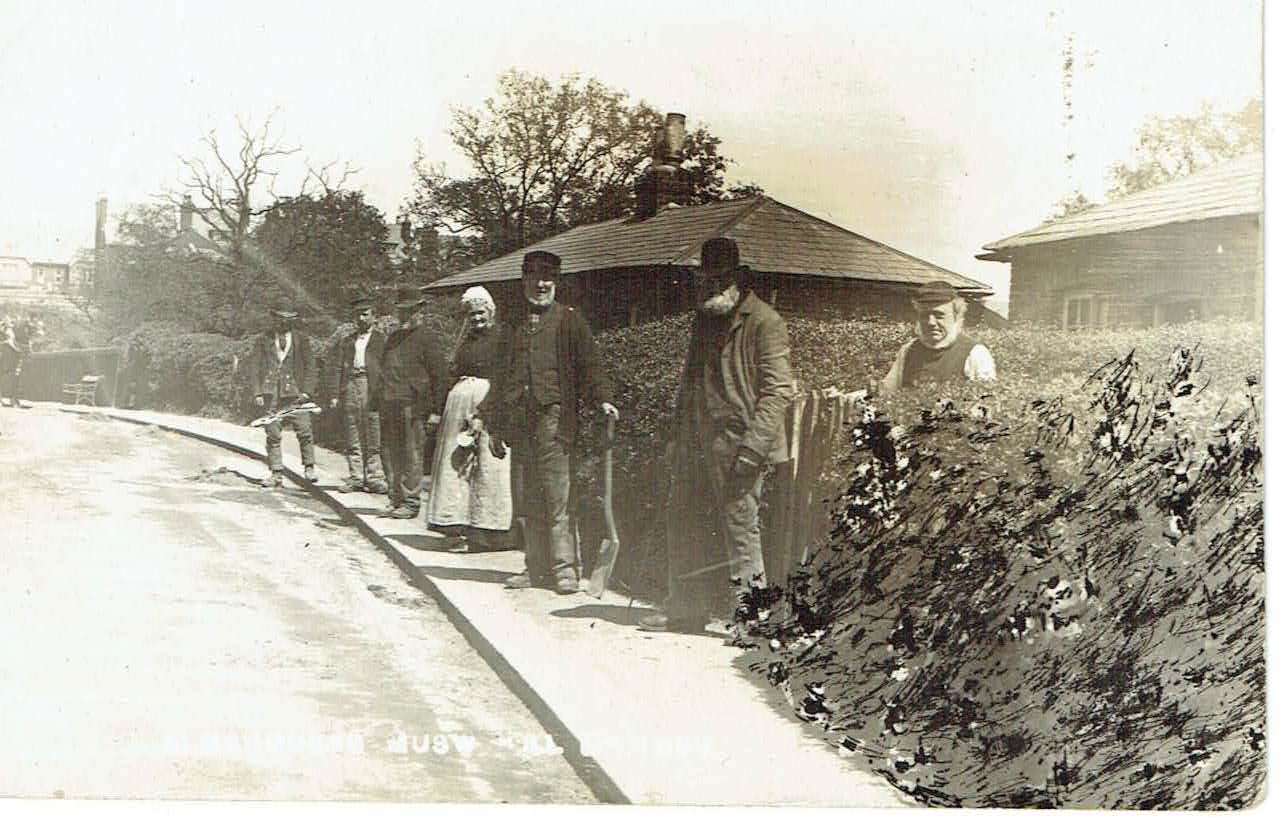
This evocative image is on a postcard gifted to the Society by nonagenarian Edwin Monk whose book, Memories of Hornsey, was the first to be published by HHS in 1976. Monk very helpfully typed information explaining the depicted scene which he stuck on the back of the postcard. So we know that this is Muswell Hill Road on the 6th May 1890.
Provision for the poor
The cottages were provision for Hornsey’s poor who have been encouraged to emerge from their rented homes to pose for the photographer. Monk tells us that the houses to be seen top left are in Onslow Gardens and that this provision was known also as Strawberry Cottages after the piece of land behind them called Strawberry Fields, now part of Queen’s Wood.
More information is provided by David Frith in his article about the cottages in HHS Bulletin 59 (2018). David refers to the provision by yet another name. He writes: ‘Muswell Hill Cottages were four pairs of semi-detached cottages situated on the east side of Muswell Hill Road on land backing on to Queen’s Wood (formerly Churchyard Bottom) that is now developed by the continuous row of houses south of Onslow Gardens. Three pairs were situated at the southern end of the site and a pair was at the north end’.
David goes on to quote, An Account of the Charities and Estates of the Parish of Hornsey by Henry Warner, 1869 (see page …) which explains that permission had been given in 1806 by the lord of the Manor (the bishop of London) to two trustees of the Waste Land Fund, Jacob Warner and John Gregory, to enclose this land, previously road side waste, and to build the cottages. These were let, at one shilling a week, to four poor persons from the ‘Hornsey Side’ of the parish and four from the ‘Highgate Side’.
When were the cottages built?
When were the cottages built? They are not shown on the 1815 Enclosure Map but probably built soon after. According to Edwin Monk the two pairs on the London side were built in 1864, ‘and some tea gardens adjoining kept by a man named Boyce and before him by John Humberstone…They were pulled down in 1899, after which a Mr Piercy commenced to build the houses which back on the wood as far as Onslow Gardens’. Monk’s information is corroborated by a photocopy in the Archive of a Notice published by The Charity Commission stating that an Inquiry was to be held on 15th May 1895 in the Hornsey Urban District Council (UDC) offices in Southwood Lane, Highgate, regarding the proposal to develop the Charity called the Parish Almshouses, or Waste Land Cottages.
Comparison with Wood Green
The images held in the Archive of Wood Green almshouses show a marked difference in appearance from those in Hornsey Parish. Their purpose is the same – the alleviation of poverty for the elderly and needy by providing a roof over their heads – but Wood Green developed much later, from the middle of the nineteenth century, and provision of almshouses here came from City of London Livery Companies with a tradition of charity, no doubt attracted by cheap land and a quiet, unpolluted environment.
Their buildings were much grander than those in Hornsey and constructed in the Tudor style to give an appearance of permanence and heritage. As in Hornsey, the almshouses benefitted from additional endowments over the years and though most buildings have disappeared now, various united charities have maintained the original benefactors’ intentions and continue providing charity to identified recipients today.
Image credits
Hornsey Historical Society